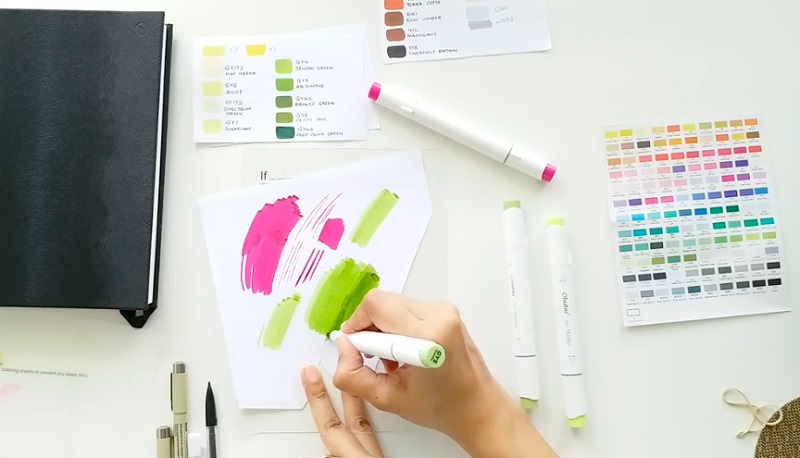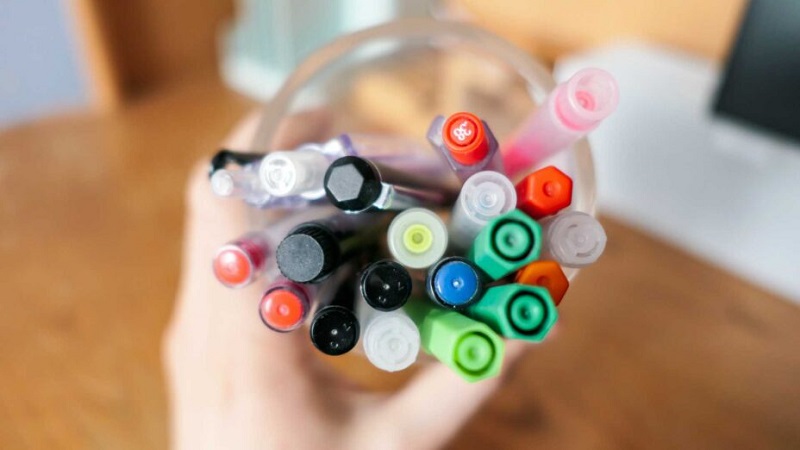Makers are one of the most versatile tools for drawing. Their use is unlimited. Kids adore them, illustrators swear by them, and teachers use them to mark the mistakes in an essay or homework assignment. For artists, markers are invaluable as well. Known as art markers, these specialized drawing mediums are designed to achieve many of the same techniques you can get with paint. Additionally, they have the same control and convenience as pens but can produce a wide range of marks in various widths and hues.
What to Look for in Art Markers: Buying Considerations

It's no wonder the use of art markers is becoming more and more common as more and more modern artists learn about their versatility and nearly infinite colour spectrum. So, if you look for a quick-drying medium to sketch on the go, work out simple compositions or create finished works under a tight deadline, enjoy a wide selection of premium art markers for sale. They will keep you covered anytime, anywhere.
Today’s art markers come in tons of brilliant colours, including metallics, neons, and pastels. They can be layered and mixed like paint or produce smooth solid lines. This makes the selection of the right set a daunting task, especially for novices. To give you a hand, we have narrowed down some of the most important buying considerations everyone should take into account.
Types
When on the hunt for the right set, you’ll see that nowadays markers for sale are solvent-based, alcohol-based, and water-based. This explains the type of ink or pigment that is utilised.
Because the alcohol-based art markers dissolve in alcohol, you can combine the ink with rubbing alcohol, another marker of a similar hue, or both. These markers are waterproof. Because of their strong smell and the possibility of eye and lung discomfort from the alcohol, it is best to use the alcohol-based type in a well-ventilated place.
The water-based markers are opaque, hazy, or milky, and they dry more slowly than the alcohol-based ones. However, you should utilize this type with caution as too many levels, can destroy and soak the paper.
On the other hand, solvent-based markers, also known as oil-based ones, have a pigment made up of chemicals such as methyl, butyl, isobutyl ketone, and xylene. These chemicals have a strong smell and can irritate your eyes and lungs, so you should use them carefully and in a well-ventilated area. Fortunately, there are now also non-toxic, xylene-free substitutes accessible.
The ink on this type is durable and water-resistant, but it is not permanent. The solvent-based markers are mostly used for arts and crafts projects and perform well on both porous and non-porous surfaces.
Paper
Choosing the right type of paper is just as important as selecting the ideal marker. When painting or sketching with markers, the type of paper you use is quite important since thicker, bonded paper holds the layers of ink far better than thinner one.
Simply put, make sure that the paper you choose can hold multiple layers of ink and will prevent the marker ink from leaking. Artists frequently use sketchbooks, and the paper they use is excellent at retaining pen layers. Thus, before you begin to draw or design, make sure you have the necessary supplies stocked up.
Application
You will also notice a difference between the brands. The type of artwork you intend to create will determine which marker is best for you to utilise. You may be a skilled architect, designer, or artist, thus your motivations for selecting the type of marker you use will differ. Alternatively, you may just be a youth or adult who enjoys painting or drawing and wishes to participate in the arts. Because every artist or individual utilises markers differently and there are markers to suit every requirement, you must be specific about your application type.
Ink Colour Options

Newbies should begin with a fundamental set of primary colours and then gradually expand their collection. Although you can buy more than one colour pack at once, it is recommended that you stick to the same brand. This is evident in some of the businesses that provide a large selection of colour packs, even though each one may have a unique theme or style.
Professionals, on the other hand, ought to choose sets marked as professional because they identify their markers according to categories, including skin tones. Professionals will also have additional possibilities with the alcohol-based art markers because they may mix and dilute the colours to produce new colours. They also have a wide range of colour options, including vibrant ones that won't show through.
Tips and Nibs
Markers also come with a variety of tips, including fine, brush, bullet, and chisel-shaped ones. Therefore, when getting your type, make sure you know what type of drawing you'll be doing, how you plan to utilise it, and the medium you'll be utilising. Fine-tipped pens are generally used for detailed work in small areas, such as sketches for comic books or manga. These sets work well for writing, drawing, and creating detailed designs, but they are ineffective for more comprehensive colour blocking.
The chiselled tip marker, on the other hand, is ideal for filling in blank spots with certain colours since it allows you to cover a larger area with fewer strokes. You can also hold the chiselled type in a variety of ways to create different line widths. Its wide edge is ideal for covering large areas, while its sharp side can be utilised to draw finer lines.
The ability to create complicated motifs or thin lines makes the brush tip one of the most versatile one. For instance, if you flatten the tip to make it look like a brush, it may fill in large swaths of colour. Not to mention that it also works well for shading.
